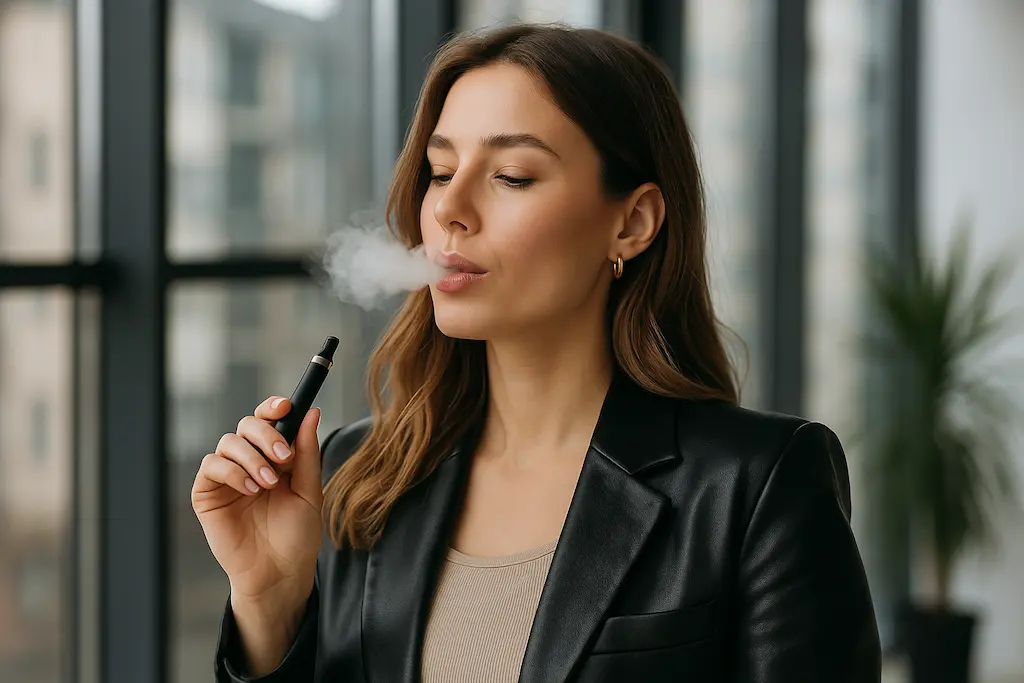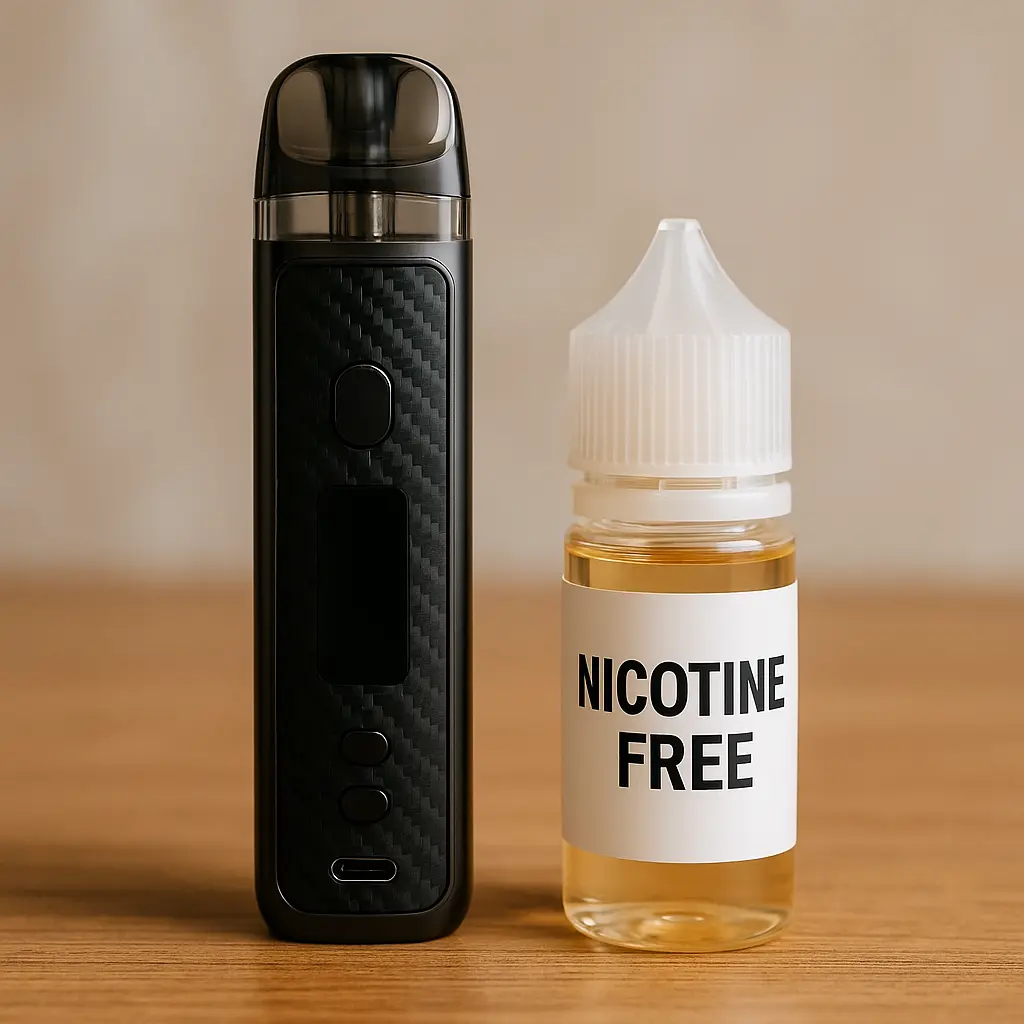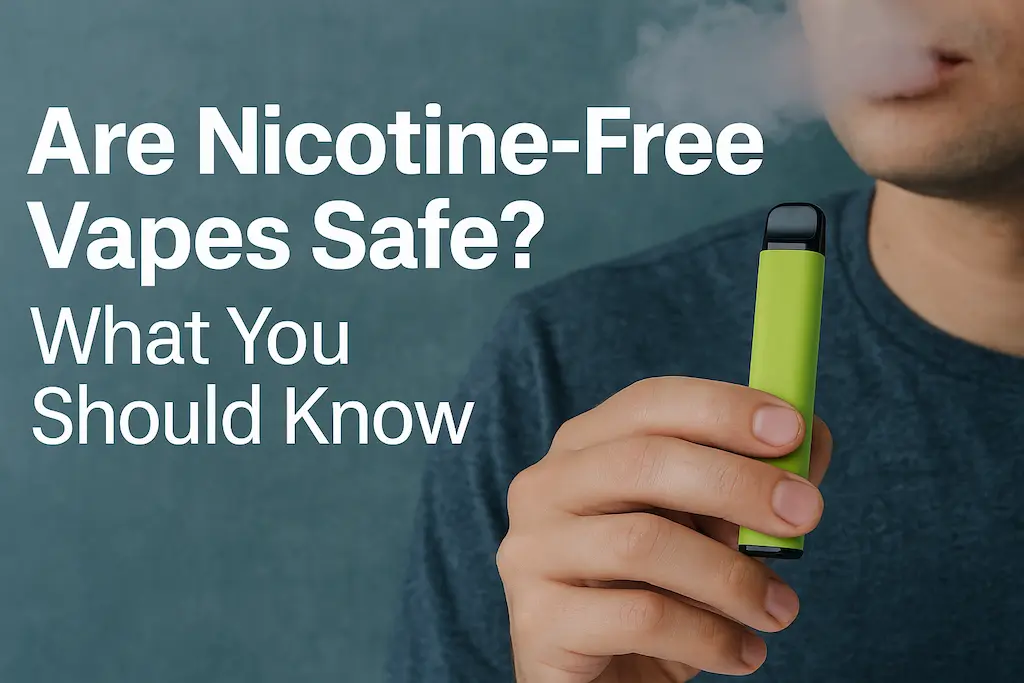If you’ve switched to a nicotine-free vape thinking it’s completely safe, you’re not alone. Many people assume that removing nicotine from a vape jetable ou stylo à vapeur means zero risk — but that’s not entirely true.
Nicotine-free or 0-nicotine vapes may reduce addiction, yet they still involve inhaling vaporized chemicals. Let’s take a closer look at what “nicotine-free” really means, how it affects your body, and how to vape safely.
What Exactly Is a Nicotine-Free Vape?
A nicotine-free vape (also called a zero-nicotine vape ou non-nicotine vape) uses e-liquid without nicotine, but the structure is the same as a regular disposable.
The juice is made of:
- Propylene Glycol (PG) – creates the throat hit
- Vegetable Glycerin (VG) – produces vapor clouds
- Flavorings – add taste (fruity, minty, dessert, etc.)
Some brands market these as healthy vapes ou water vapes, but in reality, you’re still inhaling aerosol — not pure water vapor.
Selon le Medical News Today, even nicotine-free vapes can still expose your lungs to small amounts of harmful particles and flavoring chemicals when heated.

Why Do People Vape Without Nicotine?
People use no-nicotine vapes ou non-nicotine disposables for different reasons:
- To quit smoking or nicotine gradually, use vapes jetables sans nicotine.
- To reduce stress or anxiety (vaping without nicotine for relaxation).
- For flavor enjoyment, many users love fruity or icy vapes with no nicotine.
- For social vaping without addiction risk.
- To avoid dependency while keeping the hand-to-mouth ritual.
Whatever the reason, nicotine-free vapes appeal to those who want the vaping experience without the chemical addiction.
Are Nicotine-Free Vapes Safe?
That’s the big question — are nicotine-free vapes safe?
The short answer: safer, but not entirely safe.
Even without nicotine, there are still health considerations:
1. Heating Chemicals
When PG and VG are overheated, they can form formaldehyde et acetaldehyde — both irritants.
Low-quality vapes jetables with poor coils may increase this risk.
A 2019 study from Penn Medicine found that even nicotine-free e-cigarettes can impair blood vessel function due to chemical byproducts in vapor.
2. Flavoring Risks
Even non-nicotine vapes use flavoring compounds. Some, like diacetyl, are safe for eating but harmful to inhale.
3. Throat and Lung Irritation
Users often report dry mouth, coughingou sore throat, especially when chain vaping.
4. Questionable Materials
Some cheap 0-nic vapes or no-nicotine e-cigs may contain metals ou synthetic additives. Always choose reputable, lab-tested brands.
✅ En résumé :
A nicotine-free disposable vape removes addiction, but it’s still not free of chemical exposure.
Nicotine vs. Nicotine-Free Vapes
| Aspect | Nicotine Vape | Nicotine-Free Vape |
|---|---|---|
| Addiction | High | Aucun |
| Health Impact | Dependence, craving | Mild irritation, dry throat |
| Throat Hit | Strong | Soft |
| Options de saveurs | Tobacco, mint | Fruity, dessert, herbal |
| Meilleur pour | Smokers | Non-smokers, quitters |
If you want to reduce risk and move away from dependency, nicotine-free vapes are a safer bridge — but they’re not risk-free.

Peut Nicotine-Free Vaping Help You Quit Smoking?
Yes. Many ex-smokers use 0 nicotine disposable vapes as a transition tool to quit gradually.
The act of inhaling vapor satisfies oral fixation and reduces cravings without nicotine.
But there’s a catch — you can still become habit-dependent.
To fully quit, combine vaping with:
- Behavioral therapy or support groups
- Nicotine replacement (patches, gums) if needed
- Gradual reduction from high-nicotine to non-nicotine vapes
As explained by NCBI, nicotine-free vaping can support smoking cessation, but users should remain cautious due to limited long-term data.
Common Side Effects of Non-Nicotine Vaping
You might still experience:
- Dry mouth or mild throat burn
- Dizziness after chain vaping
- Slight nausea if the vapor is overheated
- Reduced taste sensitivity over time
These are temporary, but frequent overuse can irritate your airways — even without nicotine.
Safety Tips for Nicotine-Free Vaping
- Buy from verified brands — look for ingredient transparency.
- Don’t chain vape — let your coil cool to avoid dry hits.
- Store properly — keep your vape away from heat or sunlight.
- Check airflow — clogged vents can cause uneven heating.
- Stay hydrated — vapor can dry your throat.
- Replace when flavor fades — old coils may produce a burnt or metallic taste.
For a broader view on vaping and its health effects, check the CDC’s guide on e-cigarettes, which notes that even nicotine-free vapor contains fine particles and volatile compounds.
What Experts Say About Nicotine-Free Vaping
- Public Health England: vaping is less harmful than smoking, but not harmless.
- CDC: Even 0 nicotine vapes emit ultrafine particles and flavoring chemicals.
- Johns Hopkins Medicine: There’s limited long-term data, so caution is advised.
En bref : 0 nicotine vapes reduce addiction risk but not chemical exposure.
FAQs About Nicotine-Free Vapes
Q1: Are nicotine-free vapes addictive?
No. But you can still develop a psychological habit from repeated use.
Q2: Are 0 nicotine vapes safe for your lungs?
They’re safer than nicotine vapes but still contain PG, VG, and flavoring aerosols that can irritate airways.
Q3: Do nicotine-free vapes help relieve stress?
Many people say vaping without nicotine helps them relax, but it’s a behavioral comfort — not a medical treatment.
Q4: Do non-nicotine vapes have flavor?
Yes. Most vapes with no nicotine come in sweet or minty flavors, just without nicotine.
Q5: What is the best nicotine-free vape?
Choose lab-tested, reputable brands. Avoid cheap imports or unknown 0 NIC devices.
